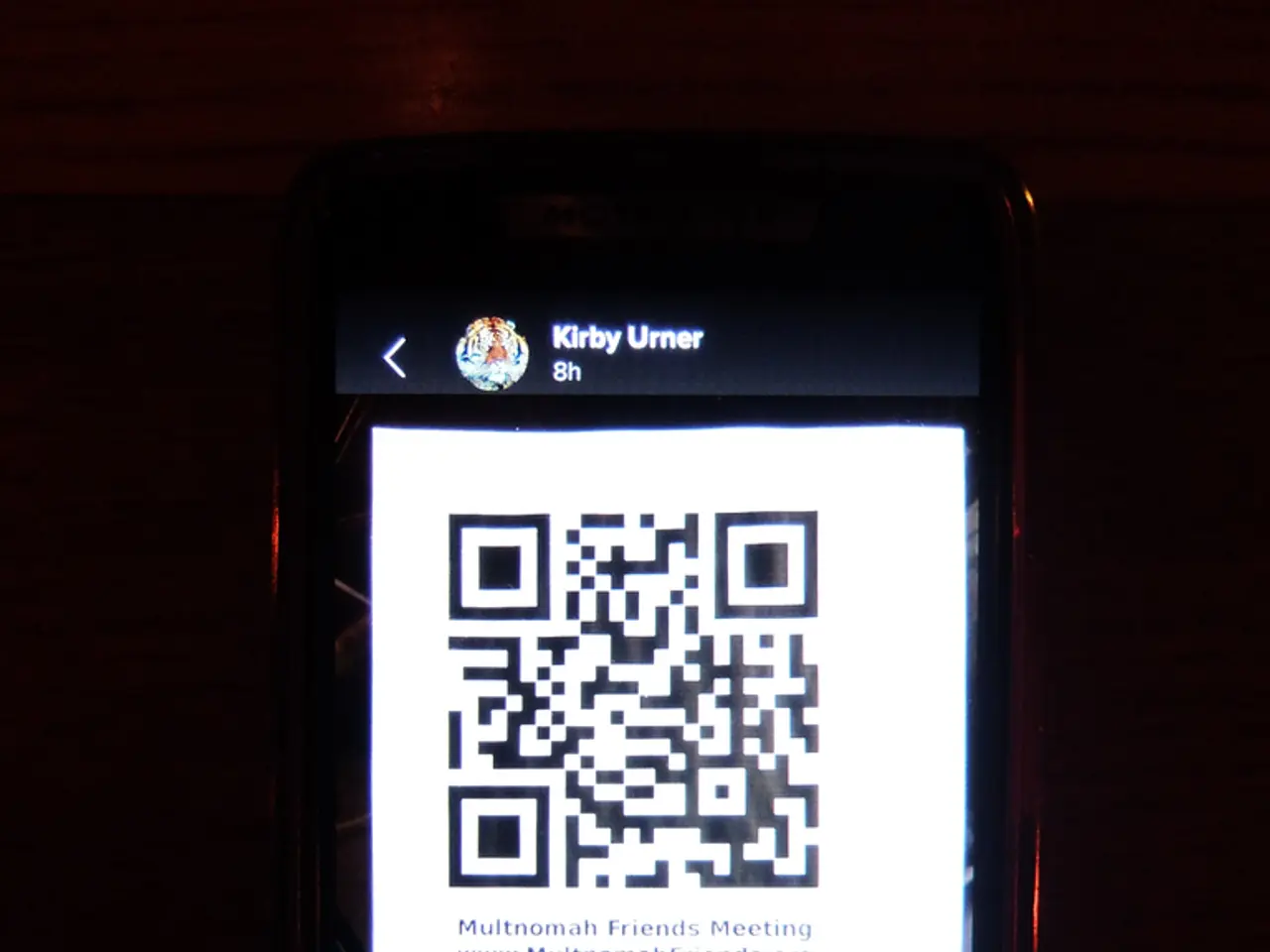Unauthorized Access to Passwords: Infiltration From Computers to Mobile Devices - Cyber Attacks in Progress
In the digital age, the rise of QR code phishing attacks, as exemplified by the Scanception password hack campaign, poses a significant threat to smartphone users worldwide. To safeguard your device, it is crucial to implement several key security measures.
Firstly, keeping your smartphone software up to date is essential. Regular updates to your phone’s operating system ensure you have security patches that reduce vulnerabilities scammers exploit through QR codes.
Secondly, employing multifactor authentication (MFA) adds an extra layer of protection. Even if scammers manage to steal your login credentials via a phishing QR code, MFA requires a code or prompt from another device, blocking unauthorised access.
Thirdly, verifying the source before scanning QR codes is vital. Be cautious about scanning codes from unknown or untrusted sources, as in the Scanception attacks, QR codes embedded in PDFs redirect victims to fake login pages to harvest credentials.
Fourthly, looking out for suspicious URLs is crucial. QR codes can redirect you to malicious websites through chains of reputable domains. Always check the URL carefully before entering any sensitive information, and avoid entering credentials if anything looks unusual.
Fifthly, using mobile security apps with phishing protection is highly recommended. Since mobile devices often lack robust endpoint protection, installing security apps that detect malicious sites or URLs accessed via QR codes can help block attacks.
Sixthly, be wary of urgent or alarming messages urging you to scan. Attackers use urgency to trick users into scanning and entering information quickly without scrutiny.
Seventhly, avoid scanning QR codes embedded in PDFs or emails unless you trust the sender and are sure of the content. The Scanception campaign uses PDFs with hidden and obfuscated QR codes to evade detection and facilitate credential theft.
By combining these best practices—regular software updates, MFA, cautious scanning, URL scrutiny, and mobile security—you can significantly reduce the risk of falling victim to QR code phishing attacks such as those used in the Scanception campaign.
In the Scanception campaign, threat actors have used at least 600 unique PDF document lures in just 12 short weeks. The attack chain typically begins with a phishing email containing a PDF lure, which, if scanned, leads to a malicious site where harm can be done, such as malware downloads or credential theft.
High-value industries, such as tech, healthcare, manufacturing, and financial sectors, are favoured by the threat actors behind the campaign. The malicious QR code in the Scanception campaign is embedded at the end of a four-page PDF, designed to evade detection methods that only scan the start of a document.
The Scanception password hacking campaign targets users across North America, EMEA, and APAC regions, and is very much still active, ongoing, and evolving. To combat this, it is recommended to deploy email security solutions that can inspect both attachments and embedded QR codes, monitor for malicious domains and URLs, and expand security protections beyond the network perimeter.
Lastly, it is essential to emphasise the dangers of QR-based attacks to staff and the importance of vigilance in the digital world. Forbes refers to QR code phishing as "quishing," and the Scanception campaign serves as a stark reminder of the need for continued vigilance and the implementation of robust security measures to protect our devices and personal information.
1.To prevent password hacking attacks like the Scanception campaign, it's advisable to install security apps with phishing protection on your smartphone, as these applications can help detect malicious sites or URLs accessed via QR codes.
- In the fight against cyber threats, staying informed about the latest cybersecurity trends, such as the danger of QR-based attacks referred to as "quishing," is crucial for safeguarding both personal and corporate information in the digital age.




